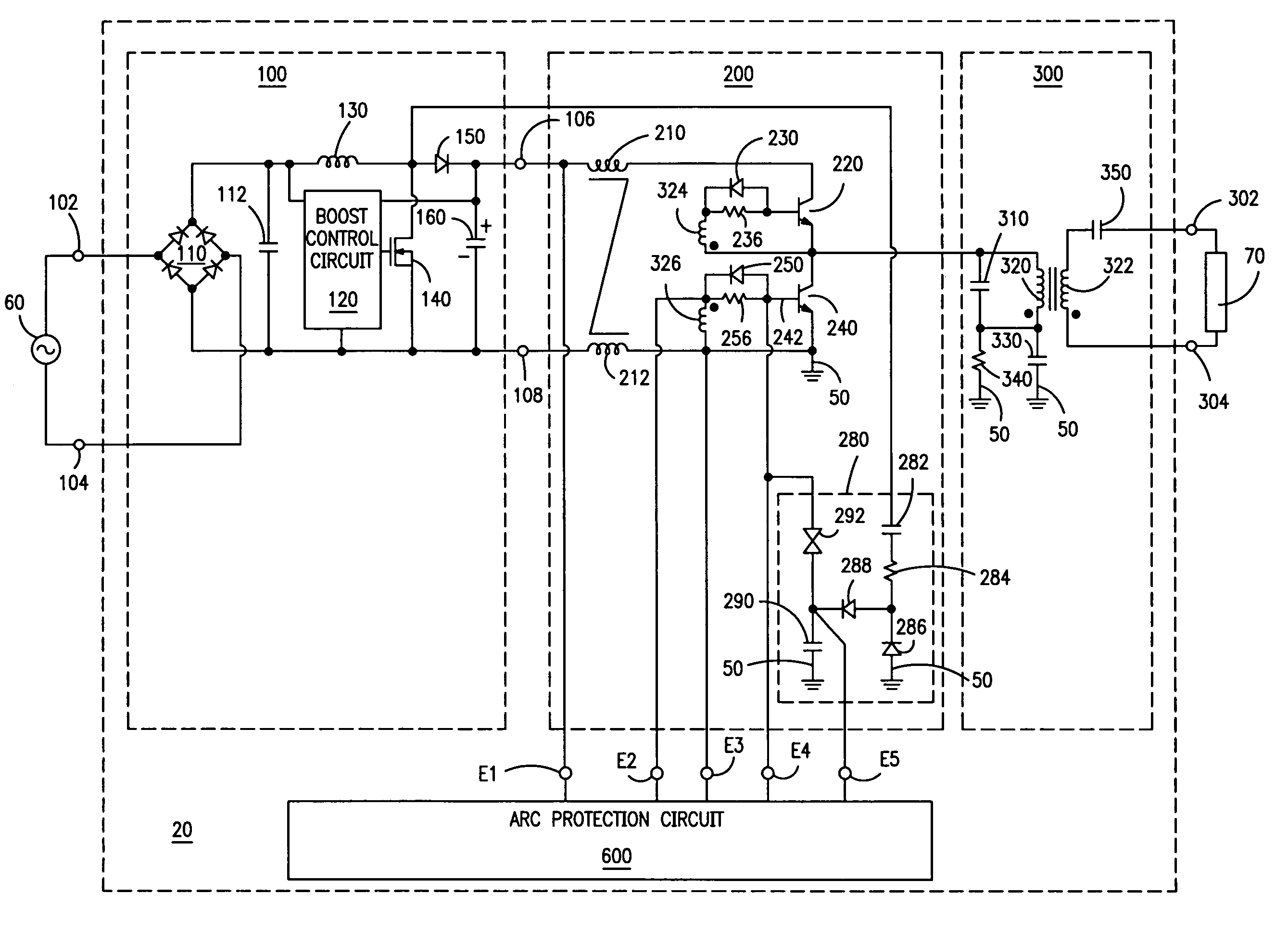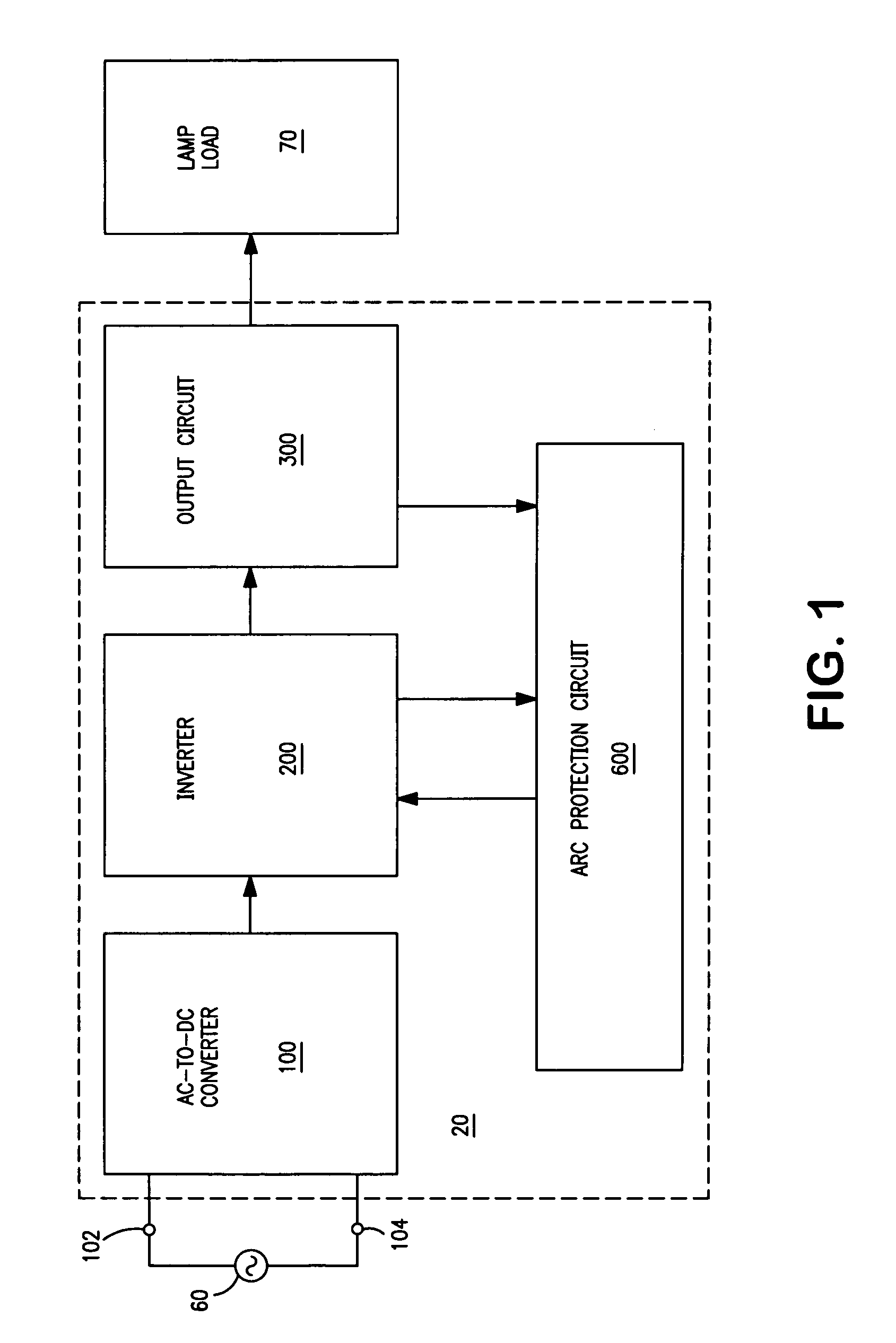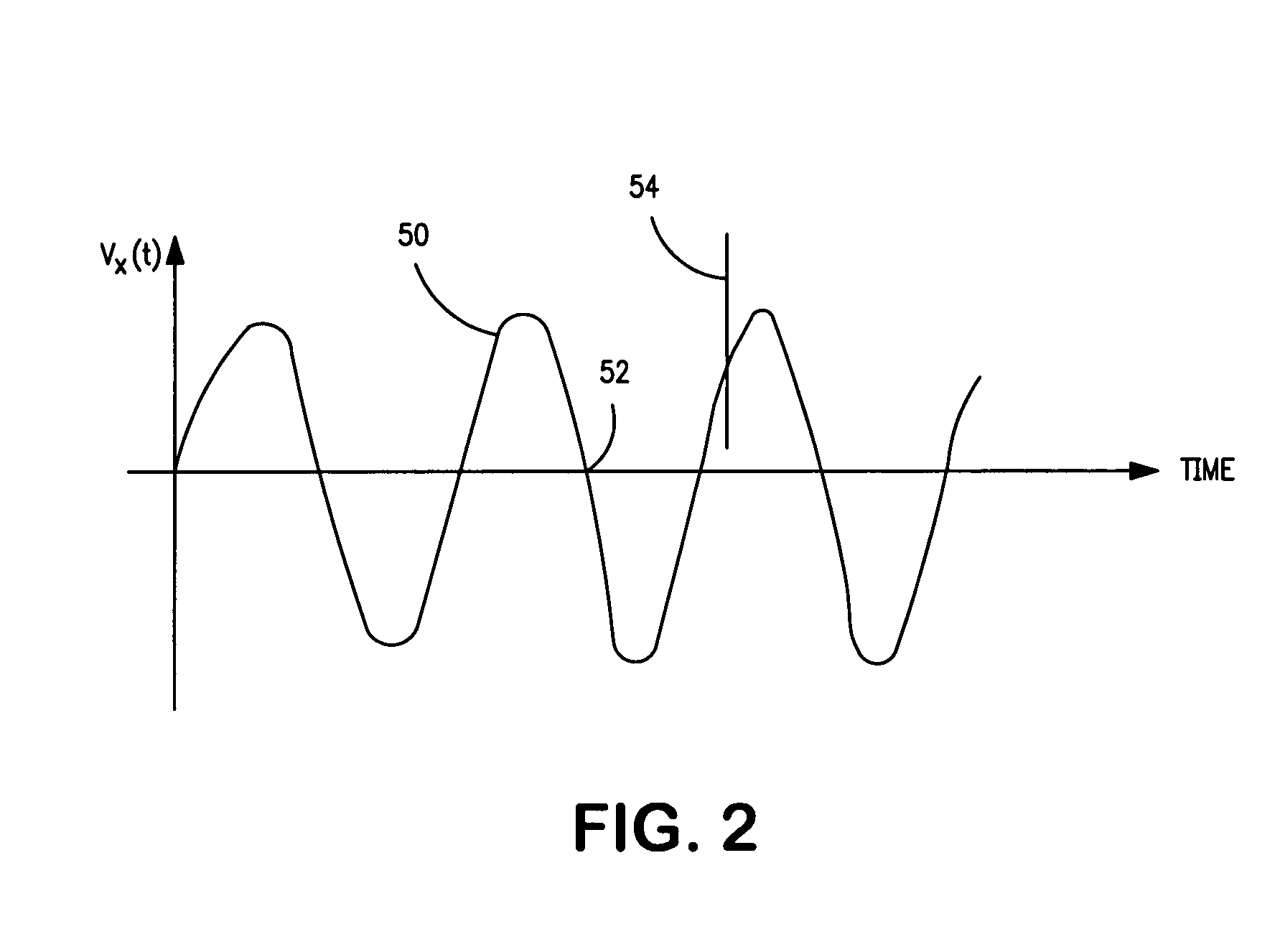Ballast with arc protection circuit
a protection circuit and ballast technology, applied in the direction of emergency protective arrangements for limiting excess voltage/current, energy-saving lighting, sustainable buildings, etc., can solve the problems of output arcing, high intensity, and high temperature arc generation across the air gap of ballasts
- Summary
- Abstract
- Description
- Claims
- Application Information
AI Technical Summary
Problems solved by technology
Method used
Image
Examples
Embodiment Construction
[0016]Referring to FIG. 1, a ballast 20 for powering a lamp load 70 that includes at least one gas discharge lamp comprises an AC-to-DC converter 100, an inverter 200, an output circuit 300, and an arc protection circuit 600. AC-to-DC converter 100 has an input 102,104 for receiving an AC supply voltage 60, and is operable to provide a DC rail voltage to inverter 200. Output circuit 300 is coupled to inverter 200, and is adapted for coupling to lamp load 70. Arc protection circuit 600 is coupled to inverter 200; optionally, arc protection circuit 600 is also coupled to output circuit 300.
[0017]During operation, arc protection circuit 600 monitors an electrical signal within either inverter 200 or output circuit 300 for a disturbance; a disturbance is deemed to have occurred when at least a portion of the electrical signal exhibits a time-rate-of-change that exceeds a predetermined threshold value. Arc protection circuit 600 provides a timed starting period during which inverter 200 ...
PUM
 Login to View More
Login to View More Abstract
Description
Claims
Application Information
 Login to View More
Login to View More - R&D
- Intellectual Property
- Life Sciences
- Materials
- Tech Scout
- Unparalleled Data Quality
- Higher Quality Content
- 60% Fewer Hallucinations
Browse by: Latest US Patents, China's latest patents, Technical Efficacy Thesaurus, Application Domain, Technology Topic, Popular Technical Reports.
© 2025 PatSnap. All rights reserved.Legal|Privacy policy|Modern Slavery Act Transparency Statement|Sitemap|About US| Contact US: help@patsnap.com



